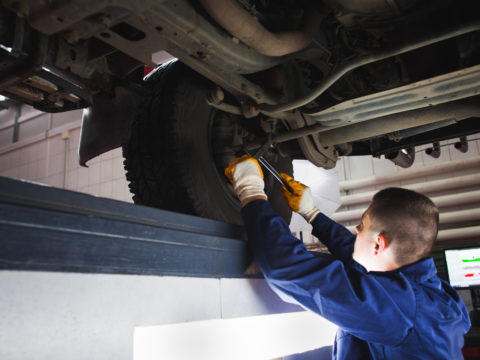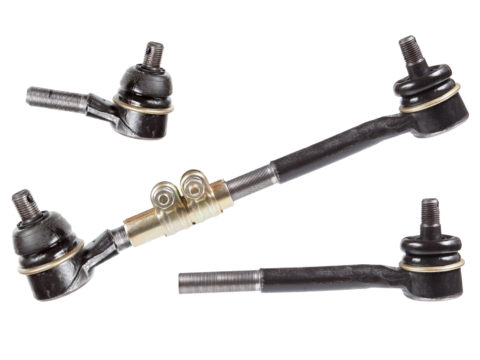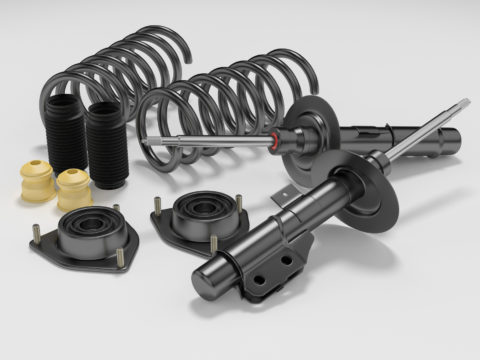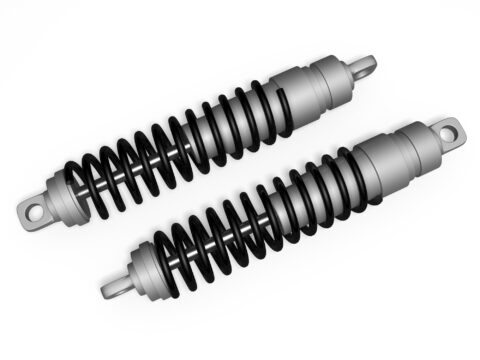Typical vehicles have a suspension built with springs made out of steel, but some cars have something called a hydraulic suspension system.
Keep reading to understand what a hydraulic suspension system is, how it works, and if it’s right for you.
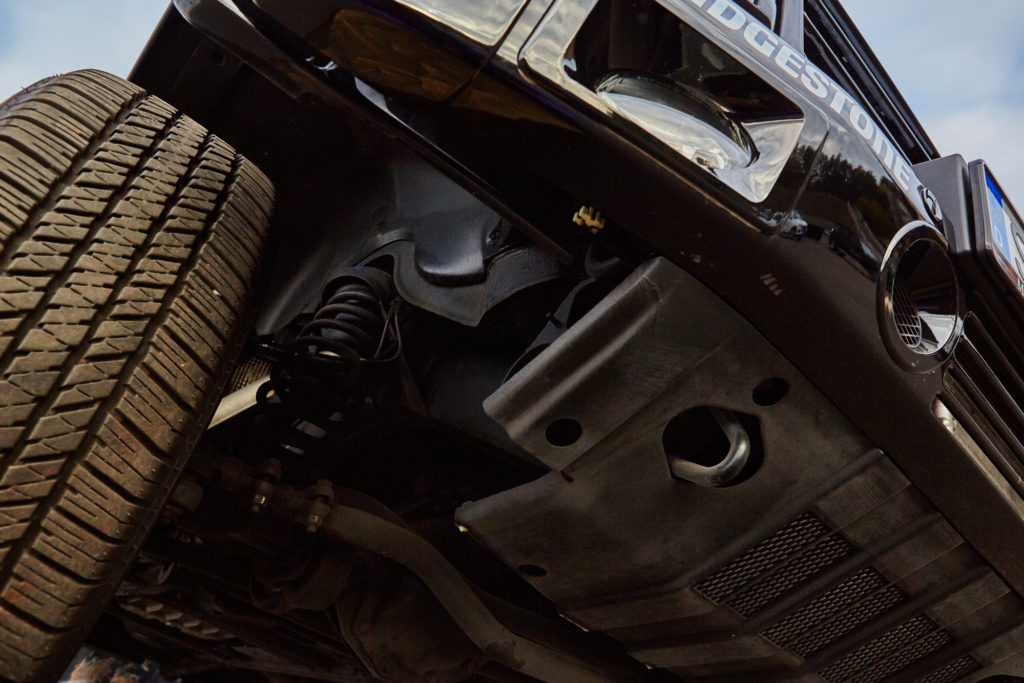
Contents
What Does Hydraulic Suspension Mean?
A hydraulic suspension features a system where fluid creates and reacts to pressure, leveling the car’s ride in reaction to bumps it travels over. That pressure can be used to tune and adjust the suspension, depending on input from the driver and even the road conditions.
Hydraulic suspensions, in general, use hydraulic fluid to pressurize a sealed system. There isn’t any air inside of it, and since you can’t compress a liquid, the system reacts to changes in its pressure. Most cars already feature one hydraulic system we’re all familiar with: the brakes. When you press the brake pedal, it puts pressure into the system.
The fluid in the master cylinder is forced into the brake lines and activates the clamping mechanisms on each corner of the vehicle, slowing the rotation of the wheels and the car. The harder you press, the stronger the clamping force that’s applied. That’s also why any air in the system needs to be purged or bled. Otherwise, the force won’t translate correctly through the system.
Those same principles are at work in a hydraulic suspension system. But instead of your foot on the brake triggering changes to the system’s pressure, it’s the input from the road surface that makes the system react to changes in pressure.
Sometimes, there is also a way for the vehicle’s operator to add or remove pressure from the system, adjusting the ride height at each corner to their preference. Typically, they control the action of the suspension through switches, and they can make each corner react independently or in unison.
Where Are They Used?
Hydraulic suspension systems used to be most common on high-end modified cars. The most well-known application of hydraulic suspensions is probably in the world of lowriders. Lowriders are a style of modified vehicles that are famous for their exotic and distinctive looks, plus their ability to raise and lower the suspension.
Hydraulic Suspension Diagram
Take a look at this pretty simple diagram that shows the basics of a hydraulic suspension so you can get a better understanding of how it works.
At the heart of the system, there is a reservoir that holds the fluid. There are hydraulic lines that carry the fluid to each corner of the car. And at each corner, there are chambers filled with fluid that control the rebound, spring, and damping of the car. When you put it all together, the system provides instant reaction to road conditions and provides a smooth ride to the passengers in the vehicle.
How Does a Hydraulic Suspension Work?
Suspension systems typically feature springs, shock absorbers, and other components that help cars remain steady as they travel over surfaces. Hydraulic suspensions do the same thing but utilize a bit of different technology to accomplish their mission.
All hydraulic systems utilize fluid to create pressure and actuate movement. Hydraulic suspensions operate on that same principle. Each corner of the car has a separate to accommodate the travel of each wheel. Basically, as the car rolls over bumps and other imperfections in the road and the wheel moves up and down, the fluid in the system maintains the ride consistently. Otherwise, the car would bounce around wildly with each bump.
Regular suspensions do the same thing, but perhaps less effectively. Plus, hydraulic systems often offer the ability to adjust the ride height and firmness by adjusting the pressure in the system. This provides the driver the ability to modify the car’s behavior based on their preferences and the road conditions.
For a lowrider, that means that when they park their car, they can lower the car to the ground. Or, they can drive with the front and rear of their car at different heights for a unique stance. For other consumers, they can use their hydraulic suspension to cushion their travel as they ride over a rough road and then firm up the components for better performance on a smooth highway.
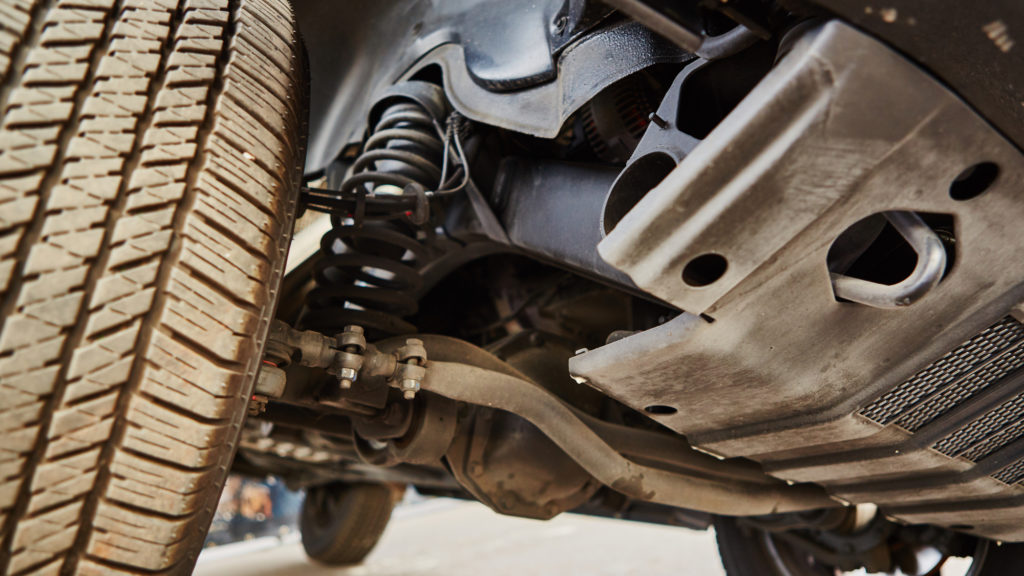
Advantages and Disadvantages of a Hydraulic System
Hydraulic suspensions are offered on some cars straight from the factory, sometimes as part of a hybrid design featuring some standard suspension components. Hydraulic systems have some pluses and minuses that you’ll want to know about before deciding if they are the best option for you.
Pros
- More flexibility to accommodate driving styles and conditions
- Quicker reactions to changing conditions
- Independent control of each corner of the car
- Adjustability on the fly
Cons
- Maintenance is more specialized and expensive
- Leaks can render the suspension useless
- Other options are more reliable and affordable
- Hydraulics are expensive
What Cars Have Hydraulic Suspension?
Some manufacturers, like Citroen, have offered hydraulic suspensions on their cars straight from the factory. But, due to the expense of installation and maintenance, as well as the development of other effective technologies, it’s pretty rare. In fact, Citroen stopped offering this set-up in 2015.
Some manufacturers, like Mercedes, still offer some vehicles with hydraulic suspensions. But, with the advance of magnetic damping and other suspension technologies, hydraulics aren’t that common. Plus, the high cost of designing, installing, and maintaining hydraulic suspension systems makes them impractical for both car builders and consumers.
However, hydraulic suspensions are still sought after, especially in the aftermarket. Certain enthusiasts, not just those who have lowriders, love the flexibility, quick reactions, and smooth ride of hydraulic systems.
How Much Does Hydraulic Suspension Cost?
A factory hydraulic suspension can be pretty pricey. They have high upfront costs, and when they break, they can cost quite a bit of money to fix. Plus, most automotive mechanics probably don’t have much experience with hydraulic systems. So, you might have to look around a bit to find someone competent to take care of your car.
Aftermarket systems can easily cost a couple of thousand dollars in parts, plus the labor to retrofit the components onto a vehicle with a standard suspension. High-end systems can cost upwards of $10,000, plus installation. The price is one of the worst aspects of this type of suspension, but for the people who really want it, it’s worth every penny.
Where to Buy Hydraulic Suspension
You can find aftermarket hydraulic suspensions from aftermarket supply companies. You can also find parts on websites like eBay or other parts suppliers. If you decide you want a hydraulic suspension for your existing vehicle, you can probably search for kits that fit your vehicle.
Certain vehicles are common for hydraulic suspension retrofits, so you’ll probably have an easier time finding parts for them—especially when compared to cars that are rarely switched over to hydraulics.
So, is Hydraulic Suspension Good?
The bottom line is that hydraulic suspensions are an excellent choice in some applications and not in other situations. If you are working on a tight budget and you don’t know any mechanics with experience working on hydraulic suspension systems, they probably aren’t ideal for you.
But if you live around the corner from a lowrider shop, and you have a car that’s easily swapped to hydraulics, it might only be a question of budget. You have to remember that high-end suspensions are almost always expensive and that hydraulic suspensions are often even more costly than other options.
Factory suspensions are cookie-cutter, made to please the masses and maintain a company’s profit margin. So, if it’s time to replace your suspension or you want a custom look, a hydraulic suspension replacement might make sense.
It’s up to you to determine if the advantages outweigh the disadvantages for you and your car.

